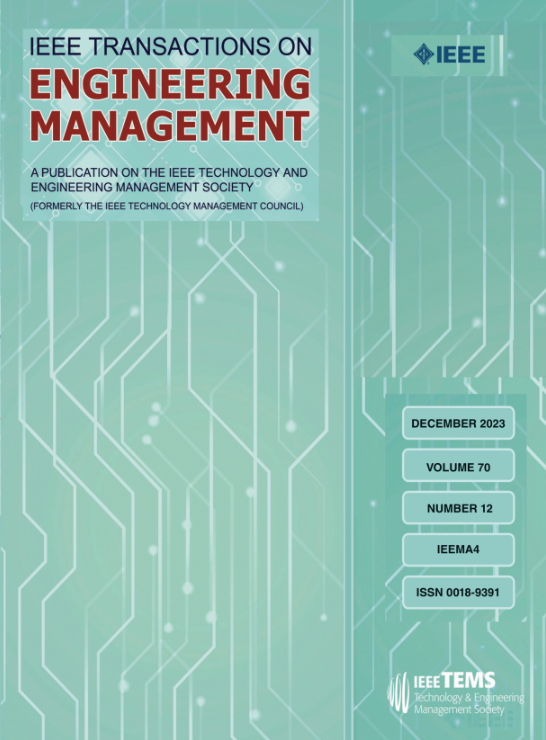Artificial Intelligence for Climate Change: A Patent Analysis in the Manufacturing Sector
IF 4.6
3区 管理学
Q1 BUSINESS
引用次数: 0
Abstract
This study analyzes the current state of artificial intelligence (AI) technologies for addressing and mitigating climate change in the manufacturing sector and provides an outlook on future developments. The research is grounded in the concept of general-purpose technologies, motivated by a still limited understanding of innovation patterns for this application context. To this end, we focus on global patenting activity between 2011 and 2023 (5919 granted patents classified for “mitigation or adaptation against climate change” in the “production or processing of goods”). We examined time trends, applicant characteristics, and underlying technologies. A topic modeling analysis was performed to identify emerging themes from the unstructured textual data of the patent abstracts. This allowed the identification of six AI application domains. For each of them, we built a network analysis and ran growth trends and forecasting models. Our results show that patenting activities are mostly oriented toward improving the efficiency and reliability of manufacturing processes in five out of six identified domains (“predictive analytics,” “material sorting,” “defect detection,” “advanced robotics,” and “scheduling”). Instead, AI within the “resource optimization” domain relates to energy management, showing an interplay with other climate-related technologies. Our results also highlight interdependent innovations peculiar to each domain around core AI technologies. Forecasts show that the more specific technologies are within domains, the longer it will take for them to mature. From a practical standpoint, the study sheds light on the role of AI within the broader cleantech innovation landscape and urges policymakers to consider synergies. Managers can find information to define technology portfolios and alliances considering technological coevolution.人工智能应对气候变化:制造业专利分析
本研究分析了制造业应对和减缓气候变化的人工智能(AI)技术现状,并对未来发展进行了展望。这项研究以通用技术的概念为基础,其动因是对该应用领域创新模式的了解仍然有限。为此,我们重点研究了 2011 年至 2023 年间的全球专利活动(5919 项授权专利被归类为 "货物生产或加工 "中的 "减缓或适应气候变化")。我们研究了时间趋势、申请人特征和基础技术。我们进行了主题建模分析,以便从专利摘要的非结构化文本数据中识别新出现的主题。这样就确定了六个人工智能应用领域。我们为每个领域建立了网络分析,并运行了增长趋势和预测模型。我们的研究结果表明,在已确定的六个领域("预测分析"、"材料分类"、"缺陷检测"、"先进机器人技术 "和 "调度")中,有五个领域的专利申请活动主要是为了提高制造流程的效率和可靠性。相反,"资源优化 "领域的人工智能与能源管理有关,显示出与其他气候相关技术的相互作用。我们的研究结果还凸显了每个领域围绕核心人工智能技术所特有的相互依存的创新。预测表明,领域内的技术越具体,其成熟所需的时间就越长。从实际角度来看,这项研究揭示了人工智能在更广泛的清洁技术创新领域中的作用,并敦促决策者考虑协同效应。管理者可以从中获取信息,以确定技术组合和联盟,并考虑技术的共同发展。
本文章由计算机程序翻译,如有差异,请以英文原文为准。
求助全文
约1分钟内获得全文
求助全文
来源期刊

IEEE Transactions on Engineering Management
管理科学-工程:工业
CiteScore
10.30
自引率
19.00%
发文量
604
审稿时长
5.3 months
期刊介绍:
Management of technical functions such as research, development, and engineering in industry, government, university, and other settings. Emphasis is on studies carried on within an organization to help in decision making or policy formation for RD&E.
 求助内容:
求助内容: 应助结果提醒方式:
应助结果提醒方式:


